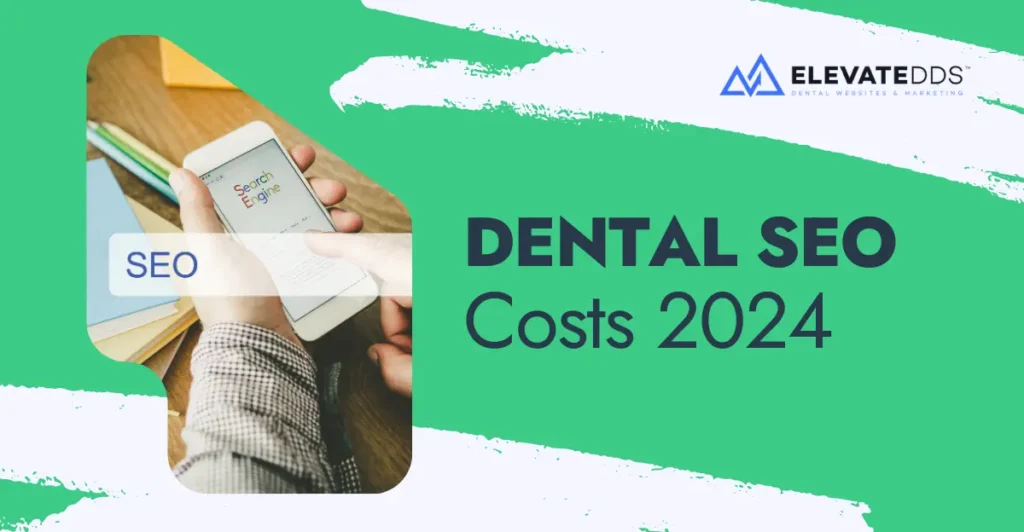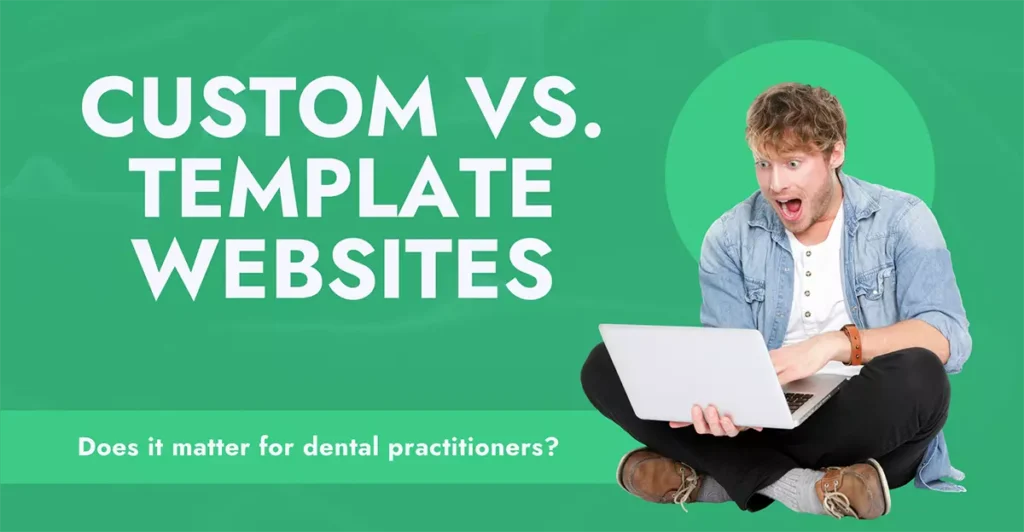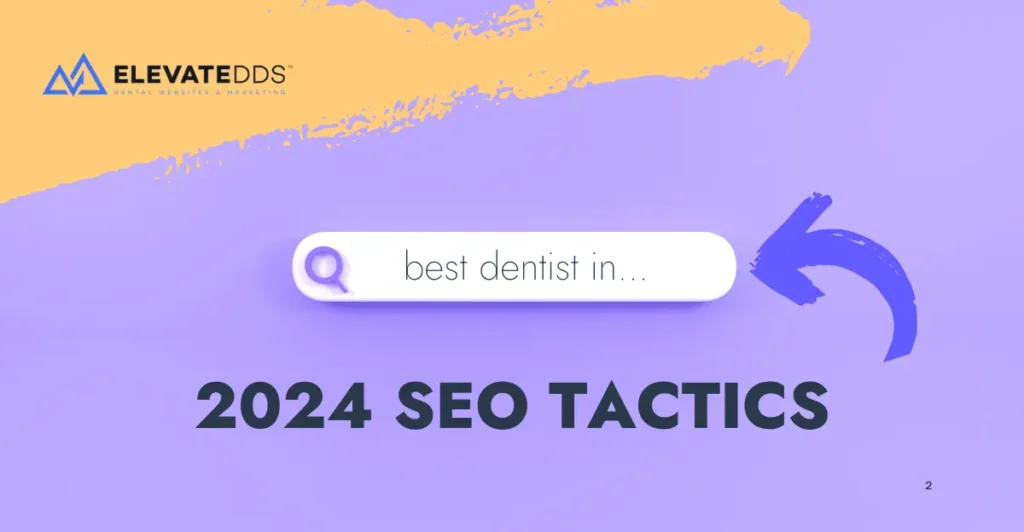Dental Marketing Plan & Strategies

How to Create an Awesome Dental Marketing Plan
Every small business owner tends to struggle with creating their first marketing plan. I think the main reason for this is that most business owners tend to focus on the outcome and end campaigns, while often overlooking the strategy, planning and execution phases. Unless you’ve gone to school for marketing or business, you probably haven’t been trained to create a strong marketing plan. Doctor’s that we work with here at Elevate DDS have many years of school under their belts, but not many of them studied any sort of marketing during their time in college. This is why we thought it would be a good idea to outline what a dental marketing plan should look like, from inception to campaign completion.

Getting Started on Your Marketing Plan
Each dental office or dental practitioner should have many marketing plans for different campaigns. For an overall “general office marketing plan” we recommend taking a look at the resources from the American Dental Association here. This will help you establish appointment setting systems and things like a CRM or Client Relationship Management program. These are basic general office needs for creating appointments and managing client relationships.
For this article, we are going to assume you have these systems in place and are ready to move on to more advanced marketing plans. So without further ado, we’ll jump right into creating your first (more advanced) dental marketing plan and campaign(s).
Define Your Goal –
The first step in creating a marketing plan or campaign is to define what the end goal will be. Are you seeking general new patient acquisition or are you looking to sell a specific service such as invisalign? How much revenue are you looking to generate from starting a new campaign? Are you looking to educate existing patients for an “up-sell” or are you looking to acquire all new patients with a specific service? These are some of the questions that should be answered when determining your goal.
Decide Which Services to Advertise –
When creating a marketing plan or individual marketing campaigns, it’s definitely a good idea to start by picking a service on which to focus. Campaigns can definitely be more general if the overall goal is say, new patient acquisition for general dentistry. However, if you can narrow a campaign down to focus on something more specific, the outcomes will generally be more successful. The strategies and demographics will vary drastically by service, so you will want to create a separate plan, strategy and campaigns for each service or end goal.
Establish a Unique Value Proposition –
After you’ve mapped out your goals and which services you want to market, you should identify your Unique Value (or Selling) Proposition. You need to understand what separates your dental practice from your competitors. Is it friendly service or location options? Years of unique experience? Maybe it’s a combination of a knowledgeable and friendly staff, pricing and payment options? If you’re having trouble identifying what your unique value proposition is, try asking your patients why they prefer coming to your practice over others in your area. Once identified, this should be the focal point of your marketing efforts moving forward.
Identify Demographics & Target Market –
Demographics is the term that generally describes things like age group, gender, income level, geographic location and education level to name a few. Obviously the demographics and target market of your campaign will vary by which services you are choosing to market. Marketing dentures to a younger audience would not have quite the same impact as they would on a much older demographic. The same could possibly be said for dental implants, where this procedure might appeal more to an older male audience. Identifying a target market for each campaign will be critical for online marketing success, and targeting potential patients in social media marketing campaigns or pay per click advertising.
Set a Budget –
Once you have everything in place, you can set a monthly or yearly budget that your practice can afford. It’s good to have a monthly budget in mind, then read through the following strategies. After you’ve read through all the marketing strategies, revisit your budget to make sure that all goals, budget and strategies align.
Determine Your Marketing Campaign Strategy
The next step in fulfilling your marketing plan is to determine the strategies or types of marketing you will use to complete your goals. There are a large number of marketing strategies you can use in each campaign. Learning more about each strategy and determining which methods are best to use for hitting your goals is critical to success.
In-Office Flyers –
Internal or in-office marketing is one of the oldest, easiest and probably cheapest way to market your practice and services. The only problem with this method, is you first have to have the existing patients to market to. If you have a large patient base that comes in for regular check-ups and cleanings, you can always create handouts that focus on cosmetic dental services. Most patients might not know how easy it is to straighten their teeth with Invisalign® or brighten their smile with in-office whitening. The best part about flyers and handouts, is companies like Invisalign®, Lumineers®, Zoom®, etc. usually have these flyers available for you to use for free! Getting these in front of existing patients is a great way to up-sell cosmetic dentistry services.
Direct Mail –
Direct mail campaigns can be hit or miss depending on execution. But when direct mail works well, it can really change your practice. One thing to consider with direct mail however, is that it can be extremely hard to measure results. This varies drastically from online marketing, in which you can track nearly every action.
There are a few different approaches that practices can take with direct mail. Postcards should have a very specific message to them that addresses your practices value proposition. It is extremely rare that anyone would actually call a practice solely from a piece of direct mail in today’s internet savvy world. Most people who take any action will usually check out your reviews and online reputation. So rather than focusing your call to action (CTA) on a telephone number or email address, focus your CTA on a custom website landing page that is tailored to your campaign. Not only can you focus this page around your value proposition, you can also measure the results by the number of web hits received. Also consider buying a short domain (URL) to act as a “vanity URL” that is very easy to type into a mobile phone or tablet. This vanity URL would then redirect to the landing page on your dental website.
Print Advertising –
Much like direct mail pieces, print advertisements should be well thought out and executed. Print ads can be extremely hit or miss and can be pretty expensive depending on the publication. In my opinion, if you have the money to invest in print advertising, then make it big. Don’t settle for a small square somewhere in the middle of the publication.
In my experience, advertisements that have run on the front page of newspapers and publications are the only ads worth running. Occasionally I have found a full back page ad to be semi successful, but the content of that ad has to be really spectacular. Focusing your ads content on an emotional reaction from your audience will generally grab a bigger response rate.
Overall however, I would shy away from print advertising as a dental practitioner unless your creative is extremely good. For the amount of money you could spend here, other online marketing tactics will usually produce 3x the results.
Email Marketing –
Email marketing is a tactic that has been completely over used and executed poorly by most industries. Think about how many newsletters you actually read and why you actually read them. For me, I might read 1-2 a week about the marketing & dental industries because that is how I make my living. Rarely would I ever read email newsletters from publications outside of my interests.
Patients are not going to waste the time reading stock or canned email newsletters anymore. If you want your email newsletter’s to be effective, then they will have to include valuable content that was given serious thought. Personalization is key to email marketing, just as it is key to your website presence as a whole. Including promotions and specials will also help make your newsletters more effective. This is one tactic that is tough to take shortcuts with. If you want it to be effective, you will probably have to roll up your sleeves and invest the time in creating them personally.
Radio Advertising –
In my opinion, radio advertising in the dental field is a huge waste of money. It’s rare that anyone who hears a 30 second spot on the radio will retain the information long enough to take any action. It may help to improve awareness of a certain dental product or service in your area, but will prove extremely tough to brand your practice without boat loads of money to throw at it. The problem with radio is that most listening occurs in the car. People can’t visit a website while driving so the only good call to action is a phone number. It can be tough to get people to make a phone call without some really good creative advertising.
Much like TV, typical radio advertising comes with bigger price tag and longer time commitments that don’t prove effective.
Television Advertising –
If there is one positive aspect about both radio and television ads, it is that you can create awareness in areas outside of your local reach. Meaning that if your practice is based in a rural area, but close to an urban population, you can extend your potential patient reach with TV and radio. By running ads on the urban or city networks, you can create some brand awareness for your practice in a nearby town. This may be one of the only positives however, as TV ads are also very expensive. And the longer your TV spot (90–120 seconds) the more the cost goes up.
Using TV advertising to get your message across is generally not effective. But if you can invest the money in longer ads that invoke an emotional response from the viewer, it may work better than shorter 15-30 second spots.
Dental Website & Online Marketing
If your dental website is not producing new patients every month, then it is time to find a new dental website design company. Your website ought to be the number one tool in your marketing plan. The best part about your website, is that it should generally run on autopilot. Whichever dental marketing company you choose to go with, make sure they are constantly updating your site with fresh content.
Today dental website marketing has become the most powerful and cost effective tool for producing new patients. There are also a few things you should know about dental websites:
- All traffic from search results will go to the top 5 or 6 positions in search results. Around 40% will go to the website in the #1 position. You need to be in the top few positions to make it worthwhile. Anything else is a waste of time and money.
- Your website is there to generate new patients, not to educate them. Many potential patients can actually be turned off by information overload. Make sure your website has clear call to actions and that you pick a company with websites designed to generate new patients.
- You will need to spend some money on SEO or search engine optimization. Unless you want to spend a ton of hours learning & practicing SEO, it’s just not possible to rank at the top without professional help.
Spend some time on the phone with your website provider. Test their knowledge and make sure they do the work themselves. Overseas development can be seedy, often leading to Google penalties for bad development & bad SEO.
If you are serious about your web presence and want an awesome website, the team at Elevate DDS – Dental Websites & Marketing is here to help.
Reputation Management & Online Reviews
Every dentist and dental office should have a plan in place to protect their online reputation. Online reviews are as important, if not more important, than personal recommendations. If you’re curious just how important it is to maintain a great online reputation, there is a great study that Brightlocal conducts every year. You can read their local consumer review survey here. This report is full of great statistics and data points on how we all view ratings and online reviews.
At Elevate DDS we always tell our clients that they should be taking an ACTIVE APPROACH to soliciting positive reviews. Dental offices shouldn’t wait and hope that 5 star reviews will come pouring in due to great service. This approach never works out in the long run. Instead, practices should be actively soliciting for positive reviews every single day. We’ve written on this pretty extensively in a blog post here. We also offer an online automated solution for dental reputation management and review solicitation.
Every dental office should take an active approach to collecting quality reviews and managing their online reputation!
– Said every marketer ever
Search Engine Marketing –
Both SEO (search engine optimization) and PPC (pay per click) advertising are referred to as search engine marketing or SEM for short. SEO results within Google, Yahoo and Bing are not bought, but rather earned through hours of hard work. This is why dentists who want to rank well will need to hire a professional to perform SEO on an ongoing basis.
Pay per click advertising can be done across a number of search engines, website networks and social platforms. A “pay per click” or cost per click (CPC) model is exactly what it sounds like, meaning you only pay when someone clicks on your ad. Most PPC models allow you to set the amount you are willing to spend by day, week or month. This is referred to as your “budget.” PPC campaigns will typically run until funds in the budget are depleted, in which case there is the option to refill the budget.
Pay per click advertising is a great way for dentists to target multiple cities or surrounding locations, as it is very hard to rank in Google organic results without a physical address in that area. PPC can also be used to target specific keywords that dentists website does not currently rank for. Keywords in a PPC campaign can also be matched to the specific verbiage surrounding any marketing plan.
Display Advertising & Remarketing –
Display and remarketing (or retargeting) advertising generally works on a cost per impression (CPM) model. The cost per impression is generally minimal and averages between $15-30 per 1,000 impressions. Display ads are richer than pay per click ads, as they can be graphical as opposed to plain text. Display ads however, tend to have very low click through rates as opposed to PPC ads. Display ad campaigns are usually more expensive than PPC campaigns because of the lower click through rates. Good creative and specific targeting of networks can help cut down on costs and the visual appeal of the ads can help to increase brand awareness.
Remarketing or ad retargeting can be a very effective tool to show an ad to someone who has already shown interest in your practice. This is generally done by placing a cookie on their browser while they visit your website. Once they leave your site and visit another website within your advertiser’s network, they can be shown your display advertisement.
Social Media Marketing –
Creating and maintaining a social media presence is almost as important as having a website. Social media marketing is a fantastic way to stay in touch with your current patients, without being in their faces too much. The bad thing about social media is that if patients haven’t liked your Facebook page or followed you on Twitter, they won’t see your posts or updates. This basically leaves two ways in which you can use social media to market your business. The first way is to keep in touch with current patients who have liked your page. I mentioned this above and I think practices should absolutely be using Facebook and other social media networks in this way. Social media should be updated often with unique and custom content that helps to build your brand and awareness.
The second way is to create ads that can target both followers as well as people who have not yet liked your page. When using paid ads on social networks, you have the ability to use the ad space on the right hand side of Facebook pages, or you can do what are called “Promoted Posts.” Each of these can probably produce some results for new patient acquisition if done extremely well. Both can also be used to acquire new fans and followers of your page, which could pay dividends down the road. The problem here is that you’re not guaranteed followers that live anywhere near your office location.
In general social media channels need to be set up and optimized for SEO purposes and updated frequently. That part is a must for search engines. From a patient acquisition standpoint, paid social media advertising can be hit or miss. However, this still may be a better solution to try than radio or TV.
Video Marketing –
This form of marketing can be extremely effective and an important part of your overall marketing plan or strategy. Years ago, video production was more expensive than it is today. Cost of high definition cameras have come down tremendously in price, and the availability of skilled production companies tend to keep the costs down a bit nowadays.
When considering the advertising possibilities of video, I highly recommend looking at hiring a production company that can create, shoot, edit and produce HD video. These companies have the know-how to create the appropriate lengths necessary for YouTube and other advertising platforms. They will also know how to optimize the videos to load and play without lag time. Most video production companies will work with the dental practice and their marketing/advertising agency to form a strategy before commencing production. When investing a good amount of money into video advertising, it’s always good to have a solid plan or strategy on how to target a given audience, and deliver the right messaging.
Video marketing however, doesn’t always need to consist of extravagant productions to return a good ROI. Dental practices can always purchase an inexpensive HD camera to capture video for both marketing and social media purposes. The latest iPhone & Android phones might even do the trick here. Video topics here can range from “how-to” or “explainer” videos posted to your website and YouTube, to more creative videos (like this parody rap dentist) that could possibly go viral!
Measure Your Results Using an Analytics Platform
So now you’ve written out your marketing plan, decided on which strategies to use, and set aside some budget to get started. The final step is to make sure that you can measure the successes and failures of your marketing efforts. I would personally recommend going with a platform such as Google Analytics. It’s a free solution and offers invaluable insights into your marketing campaigns. The best thing about using Google Analytics, is it integrates with Google Adwords (Google’s PPC advertising platform), YouTube, Webmaster Tools and other Google software.
At Elevate DDS we use a custom ROI calculator (custom analytics dashboard) that we use to calculate the effectiveness of our client’s marketing efforts. You can read more about this on our dental marketing page here.
Final Thoughts on Dental Marketing
I’ve personally put together marketing plans in a variety of industries and used every one of the above strategies. In my opinion, nothing drives optimal results and allows for as much tracking and customization as internet marketing. This is why I started Elevate DDS – Dental Websites & Marketing and why I have a passion for this business. That’s not to say that you can’t have great results using one method or strategy specifically. And best results will be achieved when using every single marketing strategy. But when businesses don’t have the budget of a General Motors, internet marketing is the absolute best way to go.
At Elevate DDS we are here to help. I feel we have put together a marketing and website package that offers more value than any other company on the market.
Please feel free to call us anytime to talk about any of the above plan and strategies. The team at Elevate DDS – Dental Websites & Marketing is here to help! Please feel free to contact us here and set up a time to discuss your marketing plan.
Need to speak with an expert?
Maximize your practice's efficiency today by scheduling an appointment with one of our experts. We're standing by to help you in your journey of elevated practice growth.
Drop Knowledge
Share these Elevated Insights with your professional network.
Elevated Insights
Dive into our other blog posts featuring creative ways to elevate your practice and dominate your service area.



